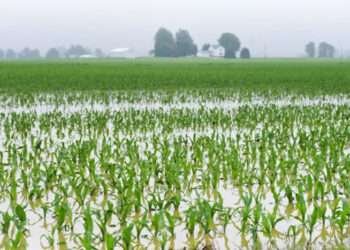The Tema Metropolitan Assembly’s market has recorded the highest price of maize out of the 18 major markets in Ghana, according to MoFA.
Of all the retail market prices of maize and some agricultural commodities released in 18 major markets in Accra, maize was sold at a highest price in the Tema market, which is likely to affect food processing industries in the Assembly.
The average weekly wholesale prices for some agricultural commodities in GHS per kilogram/liter by the Ministry of Food and Agriculture (MoFA) showed that there had been a general rise in foodstuff, with maize sold at a price higher in the Tema market.
A kilogram of white and yellow maize is sold at GHS6.62 and GHS7.97, respectively. The 18 markets enlisted by MoFA included Agbogbloshie, Madina, Tema, Cape Coast, Takoradi, Mankessim, Ho, Hohoe, Kintampo, Kumasi, Obuasi, Sunyani, Techiman, Goaso, Tamale, Garu, Wa, and Yendi.
The retail price of 1kg of white and yellow maize on the Sunyani market recorded the lowest price, thus GHS2.07 each.

Speaking to Vaultz News, Mr. Clement Abuji, an Agribusiness Expert, explained that the changes in the prices of maize in these markets are not a surprise to him.
“Take Tema, for instance; it is an industrial area with many processing companies. Like Nestle’ Ghana, most of these companies need tonnes of maize in their daily production activities, hence the high retail price of maize. Sunyani, for instance, is a maize producing Region and has no industrial company demanding maize like Tema, therefore, leading to the price we are seeing. Prices of agricultural commodities are driven by demand from consumers, especially the big consumers which are the industries.”
Mr. Abuji
Maize is the second most-produced crop globally, and it’s more than just a staple in our diets, said Mrs. Aggrey-Fynn, an Economist.
“From the malt we drink to the baby foods, maize is part; maize has hundreds of uses. Consequently, high maize prices in the Tema market can have a domino effect that can affect many industries and increase the cost of products these companies produce. Nestle’ Ghana is located in Tema, including other food manufacturing companies; hence, the increase in maize prices on the Tema market is likely to reflect in their products, thus burdening consumers.”
Mrs. Aggrey-Fynn
Experts have also advised that suppliers of maize should source maize from Sunyani, where they are less demanded, to the Tema market, where it is extensively demanded to curb the rise in price. Ghana is self-sufficient in white maize. The small volumes imported are mainly, if not entirely, constituted by yellow maize, which is used primarily by poultry industries.
READ ALSO: FNB Bank Ghana CIO Urges Businesses to Leverage on Technology to Enhance Customer Experience





















